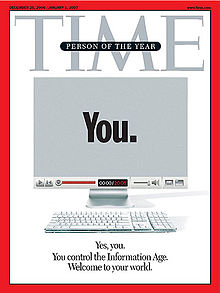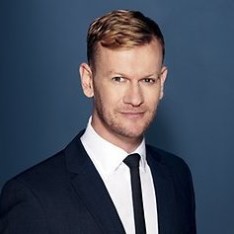Elle deputy editor admits to nerves around its mirror cover treatment for latest edition
 Bauer Media’s fashion magazine Elle has ditched the typical celebrity cover for a mirrored treatment that allows the reader to see themselves as the cover model to complement the magazine’s feature celebrating the diversity of women.
Bauer Media’s fashion magazine Elle has ditched the typical celebrity cover for a mirrored treatment that allows the reader to see themselves as the cover model to complement the magazine’s feature celebrating the diversity of women.
Speaking to Mumbrella, Elle deputy editor Damien Woolnough admitted the magazine did have some nerves around the cover treatment, and consulted with outside cover advertiser Chanel before committing to it.
“You don’t also want to be tokenistic in any way and we’ve had quite a diverse selection of covers in our time on stands,” he said when asked why they didn’t use a range of diverse women on the cover instead.
“We’ve had an indigenous cover person with Jessica Mauboy, we’ve had diversity of shapes and ages and ethnicity with [fashion blogger and influencer] Nicole Warne and backgrounds.
“We feel the Elle covers are always quite diverse but I’m not going to pretend there weren’t nerves,” he added.
 It is not the first time a magazine has done a cover like this, with Time Magazine chosing “You” as its 2006 person of the year. The cover of the magazine featured an iMac computer monitor with a reflective pane appearing as the window of a YouTube-like video player.
It is not the first time a magazine has done a cover like this, with Time Magazine chosing “You” as its 2006 person of the year. The cover of the magazine featured an iMac computer monitor with a reflective pane appearing as the window of a YouTube-like video player.
The magazine’s We are Women feature showcases 47 women and girls aged from one-month through to one-century and features the likes of Lisa Wilkinson, Julie Bishop, Margaret Pomeranz and Chrissie Swan. Readers can also contribute to the ‘We Are Women’ gallery by submitting their own headshot online.
Woolnough said the magazine was confident it has already made itself “represent diversity with our past cover selections” but the nerves were still there and saw the magazine work closely with its advertisers to “make sure they were on board with what we were doing”.
“In particular we consulted with Chanel who occupy the outside cover of this issue to make sure they feel comfortable with what we’re doing. We’ve had incredible support,” he said.
Woolnough said the cover was “the best way of reflecting the diversity of Australian women”.
“Of course as publishers we are all looking for new ways of engagement and we thought this was an innovative way of engaging our audience and because of the feature, which we think is quite important, it came off as a meaningful engagement rather than just a gimmick,” he said.
Woolnough said the magazine was confident it has already made itself “represent diversity with our past cover selections”.
In terms of the risk of turning off potential buyers by the lack of a well-known face, Woolnough was hopeful buyers would “see something different amongst the sea of Jennifer Aniston’s and Blake Lively’s and that hopefully that will be enough to catch their attention.”
“It’s also a matter of timing, this has come off the back of a very traditional cover with Jen Hawkins in September, which performed exceptionally well for us, so that gave us a bit of permission to experiment as well,” he added.
Woolnough said in light of print magazines posting circulation declines, with Elle magazine seeing its circulation dip by 0.30 per cent according to the latest Audit Bureau of Circulation figures, it is important to be innovative.
“It’s incredibly important to look at new ways of engagement across all our media, a lot of people have been focusing on how they do that digitally and through social media,” he said.
“Print is at the heart of Elle and we wanted to do something innovative with print on this occasion and it’s great that people have noticed.”
Miranda Ward



The only reason they should be nervous is becasue its a direct rip off of TIMES cover 10 years ago https://en.wikipedia.org/wiki/You_(Time_Person_of_the_Year)
It’s like, how much more mirrored could this be? and the answer is none. None more mirror.
Clearly a rip off of Time. Very bad form Bauer.
“So 10 years ago” Seriously!
Good on ELLE for trying a cover stunt like this in a fragmented media landscape.
Let the sales of the magazine speak for themselves.
“No idea was born in a vacuum” heard that one before?!